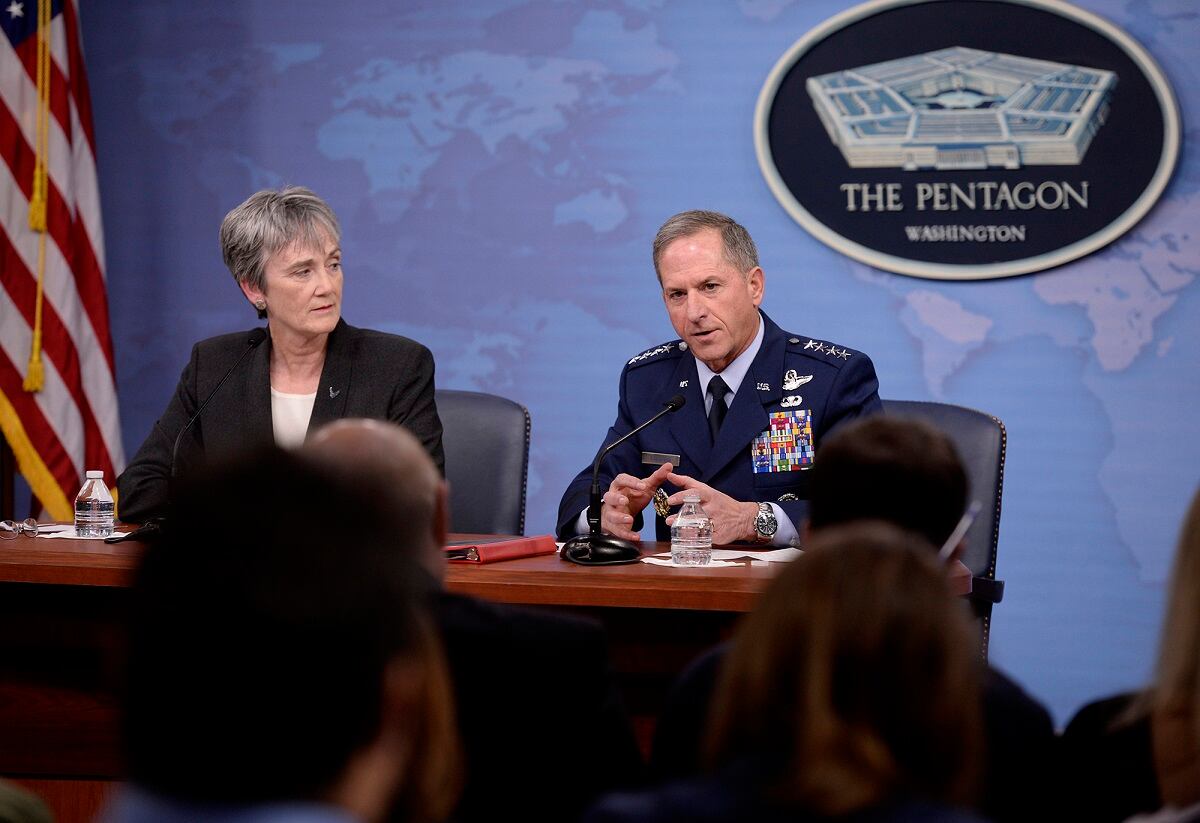WASHINGTON — The Air Force’s top official on Tuesday stood behind a controversial decision to scale back media engagements while its public affairs apparatus goes through additional operational security training.
The service on March 1 temporarily halted media embeds, base visits and interviews until public affairs staff and Air Force officials who regularly speak with the press complete the retraining, Defense News learned earlier this month.
The decision unleashed a public relations nightmare for the service, with some members of Congress and former Air Force officials stepping forward to voice concerns the short-term freeze could have longer-term implications for the service’s willingness to engage transparently with the public.
Speaking to the House Armed Services Committee on Tuesday, Air Force Secretary Heather Wilson doubled down on the decision to go forward with the retraining period, a call that was made by herself and Air Force Chief of Staff Gen. Dave Goldfein.
“It has to do with operational security. We have an obligation to be transparent, but not with things that our adversaries can use against us,” she said. “It was time to go a reset and a retraining of our commanders and public affairs officials, which we have done. […] What we do need to make sure is that our commanders do not release operational details that are classified or could help our enemies.”
Wilson added that reporters did not know about the media reset until the memo was released in full by Defense News, proving that it “obviously didn’t affect how we were engaging with the media.”
However, Defense News began investigating whether a memo existed after noticing a growing resistence by Air Force officials to talk about readiness or future capabilities, as well as hearing accounts from reporters who had interviews canceled or delayed.
HASC Chairman Mac Thornberry, R-Texas, told reporters after the hearing that he has spoken to Defense Secretary Jim Mattis before about how to best balance keeping the public informed without giving away sensitive information.
“Public support is essential for support of our military, and transparency is an important feature of our system. We don’t want to be dumb about it and give adversaries a leg up on us by disclosing things we shouldn’t. And there is always a tension going back and forth,” he said.
“But I think more open discussion is generally better. It has generally better results.”
However, exactly what constitutes as “too sensitive” was not made clear, even within the “public engagement reset” guidance released on March 1.
The seven-page memo lays out a list of potential operational security risks, but many of the items contained in it — such as the “number, location and capabilities of operational assets” or descriptions of the types of scenarios that occurred during a military exercise — are frequently written about not only by the mass media but by Air Force public affairs.
After the hearing, Rep. Mike Gallagher, R-Wis., who asked Wilson about the public engagement guidance during the hearing, said that by not talking about some of its problems, the military puts itself at risk of not getting the funding it needs from Congress.
If the military is up front about its shortfalls, defense-minded lawmakers can more easily get the rest of Congress on board with a funding hike, he said.
“The [Bipartisan Budget Agreement] only came about because we were able to educate our colleagues on the readiness crisis,” he said in a tweet. “Pretending everything is okay doesn’t make our military more ready, but it does make it less likely Congress sends reinforcements.”
Thornberry stopped short of criticizing the Air Force’s decision to scale back the information it shares with the public, but he noted that he has “some concerns” about the service’s decision to suspend much of its public affairs apparatus while retraining occurred.
“But that’s part of the reason, fairly unique to our system, that we have an independent branch of government that oversees what they do and how they do it,” he said. “So we’ll keep trying to do our part.”
Leo Shane III contributed to this story.
Valerie Insinna is Defense News' air warfare reporter. She previously worked the Navy/congressional beats for Defense Daily, which followed almost three years as a staff writer for National Defense Magazine. Prior to that, she worked as an editorial assistant for the Tokyo Shimbun’s Washington bureau.




